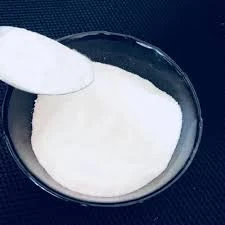
ഡിസം . 05, 2024 15:17 Back to list
re dispersible polymer powder
The Significance and Applications of Redispersible Polymer Powder
Redispersible polymer powders (RDPs) have emerged as crucial materials in the construction and building industry, particularly in applications such as adhesives, sealants, and coatings. These fine, white powders are produced by drying polymer dispersions and are designed for easy re-dispersion in water. This feature makes them invaluable in enhancing the performance of various construction materials. This article explores the significance, characteristics, and varied applications of redispersible polymer powders.
Characteristics of Redispersible Polymer Powders
Redispersible polymer powders possess several key characteristics that set them apart. One of the primary attributes is their excellent film-forming capability. When mixed with water, they can create a uniform film that enhances the adhesion of materials to surfaces. This film can also improve flexibility and elongation, enabling structures to adapt to moisture and temperature changes without cracking.
Moreover, RDPs provide enhanced resistance to water and chemicals, making them ideal for applications in environments exposed to harsh conditions. Their use can significantly improve the durability and longevity of construction materials. Additionally, redispersible polymer powders often exhibit exceptional workability, allowing for easier mixing and application in various formulation types, from tile adhesives to dry-mix mortars.
Applications in Construction
The construction industry is one of the primary sectors benefiting from redispersible polymer powders. One of their most common applications is in the formulation of tile adhesives. RDPs improve the bonding strength between tiles and substrates, facilitating the installation process and ensuring that tiles remain firmly adhered over time. This application is particularly critical in areas such as bathrooms and kitchens, where moisture is prevalent and the potential for tile failure is higher.
Additionally, RDPs are utilized in the production of repair mortars. Here, they contribute to the overall flexibility and durability of the mortar, which is essential for repairs in concrete structures. By enhancing adhesion and minimizing cracking, RDPs ensure that repairs last longer and perform better under various environmental conditions.
re dispersible polymer powder

Furthermore, RDPs play a significant role in exterior applications, such as in the formulation of renders and plasters. In this context, they provide improved weather resistance and reduced water permeability, which are essential properties for protecting buildings from the elements. The flexibility that RDPs impart to plasters is also crucial for allowing structures to endure seasonal temperature fluctuations without experiencing failure.
Another important application of redispersible polymer powders is in the production of self-leveling compounds. These materials need to spread evenly and adhere strongly to substrates, and RDPs significantly enhance these properties. By ensuring that the compound remains workable and maintains its performance characteristics once set, RDPs contribute to achieving smooth, level surfaces.
Advantages Over Traditional Materials
Compared to traditional materials, redispersible polymer powders offer numerous advantages. Firstly, they allow for the production of lightweight formulations, reducing overall material costs and improving handling. Secondly, RDPs can enhance the performance of existing formulations, meaning that manufacturers can achieve better results with lower quantities of expensive raw materials.
Additionally, the use of RDPs can lead to improved environmental sustainability. Because they enable more efficient use of resources and contribute to longer-lasting materials, they can play a role in making construction practices more eco-friendly. As the construction industry continues to seek greener alternatives, redispersible polymer powders are likely to gain even more traction.
Conclusion
In summary, redispersible polymer powders are integral to modern construction practices, offering a range of beneficial properties that enhance the performance and durability of various materials. Their outstanding adhesion, flexibility, and resistance to environmental factors make them indispensable in applications such as tile adhesives, repair mortars, renders, and self-leveling compounds. As the industry evolves, the demand for high-quality, versatile materials like RDPs will likely continue to grow, highlighting their importance in shaping the future of construction. By leveraging the advantages provided by these innovative powders, manufacturers can improve their products, respond to market demands, and contribute to more sustainable building practices.
-
Versatile Hpmc Uses in Different Industries
NewsJun.19,2025
-
Redispersible Powder's Role in Enhancing Durability of Construction Products
NewsJun.19,2025
-
Hydroxyethyl Cellulose Applications Driving Green Industrial Processes
NewsJun.19,2025
-
Exploring Different Redispersible Polymer Powder
NewsJun.19,2025
-
Choosing the Right Mortar Bonding Agent
NewsJun.19,2025
-
Applications and Significance of China Hpmc in Modern Industries
NewsJun.19,2025







